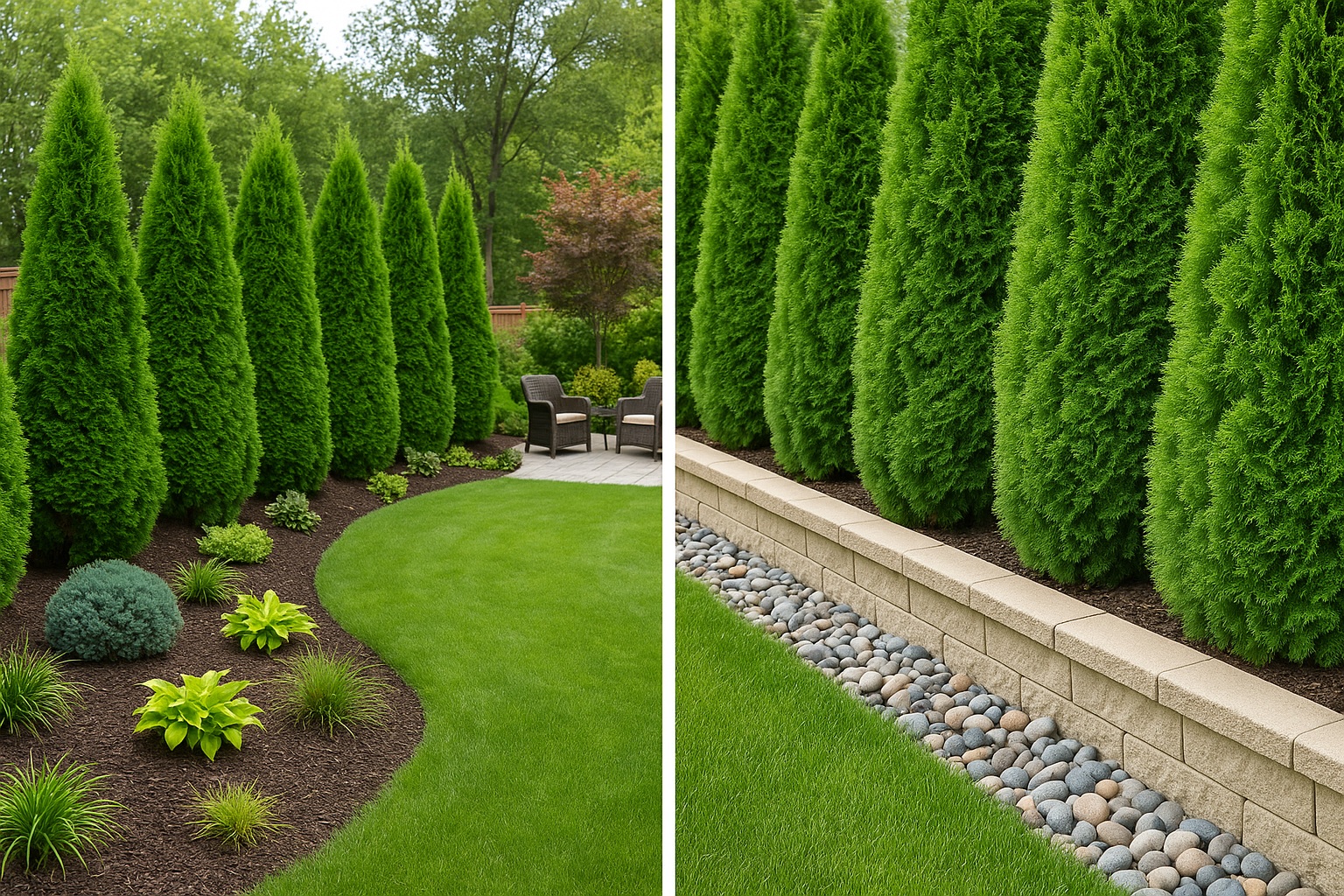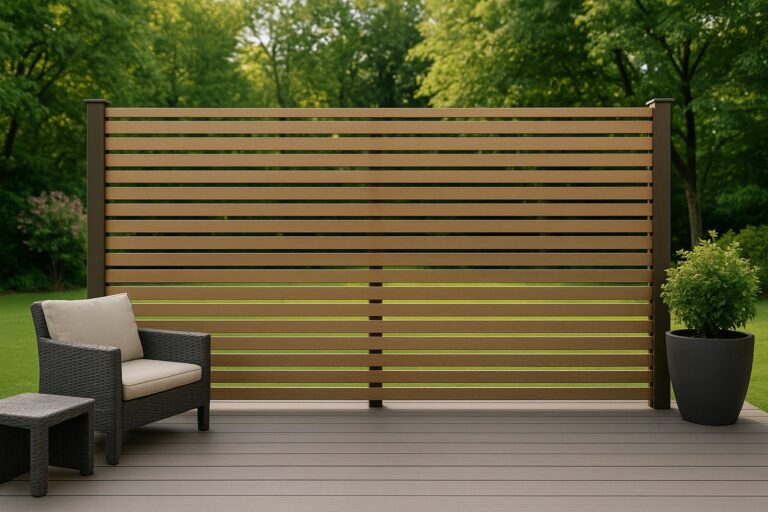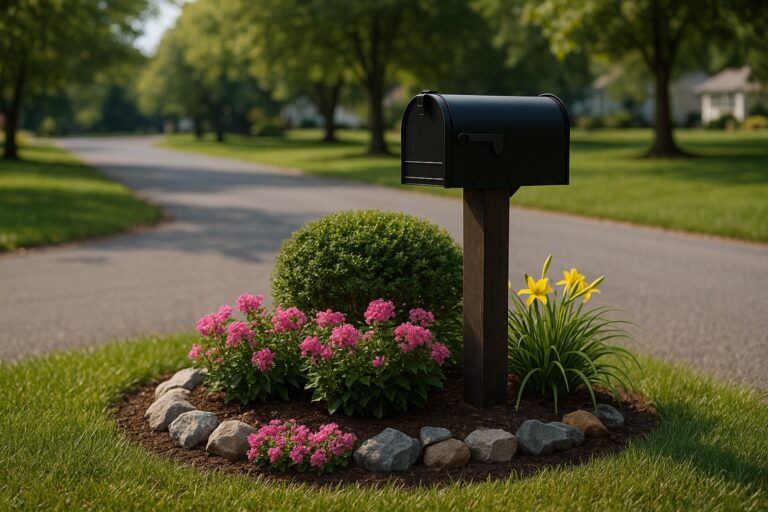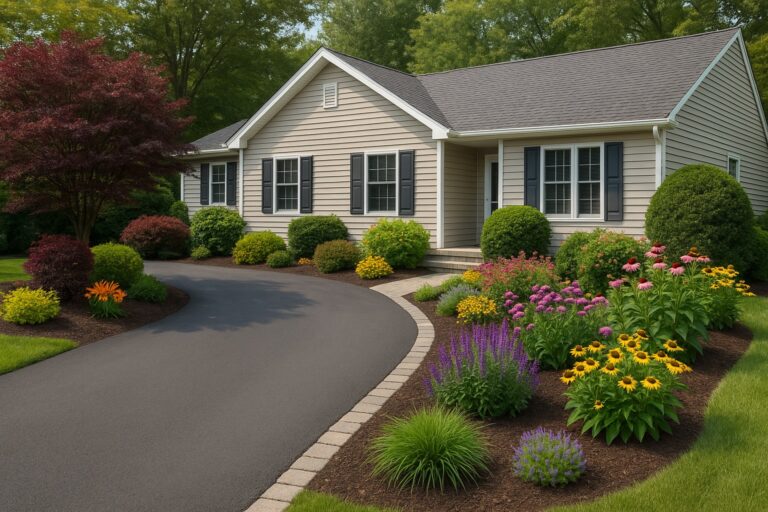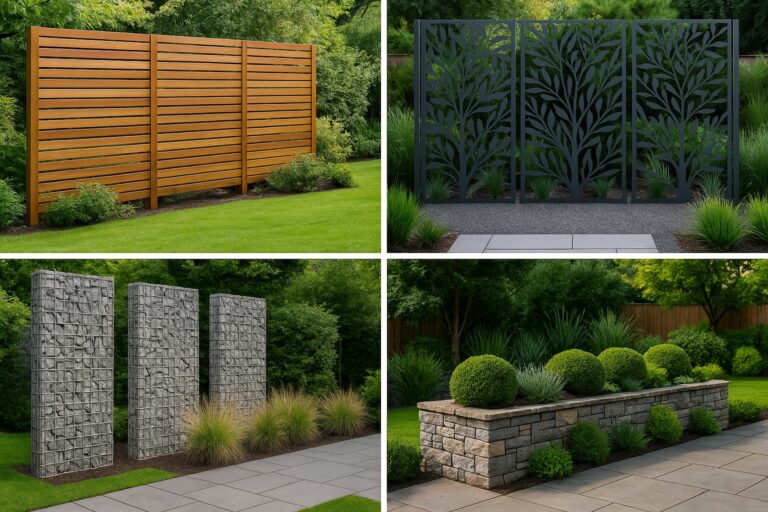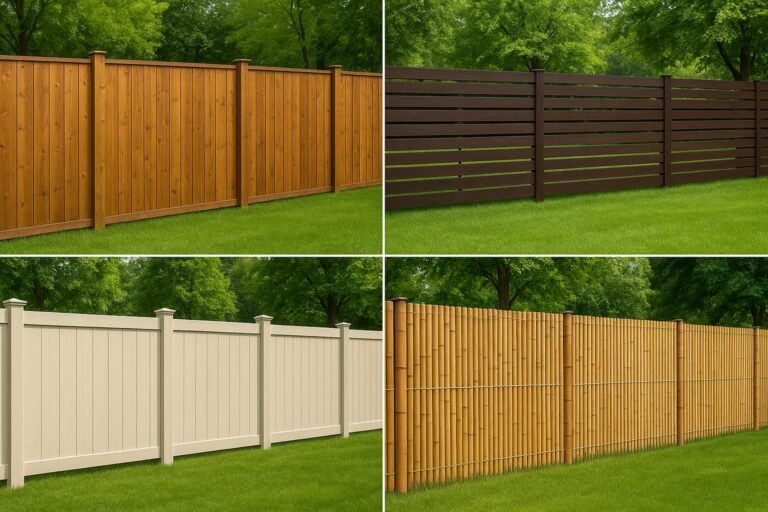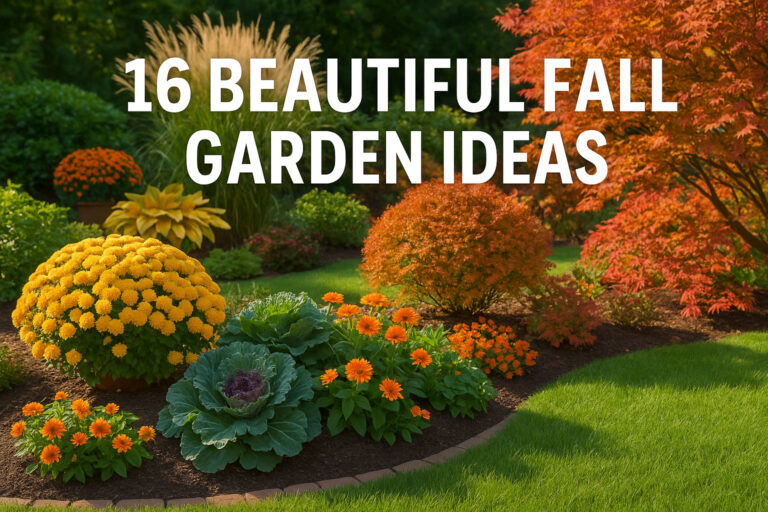Arborvitae (Thuja) remain a favorite for homeowners because they deliver instant structure, year-round color, and dependable privacy without fussy care. Their naturally upright habit makes them easy to place along boundaries, but they’re far more versatile than a simple hedge. You can use arborvitae to frame architecture, carve “rooms” into big backyards, shield pool decks, or soften hard corners. They tolerate a wide range of soils, respond well to pruning, and pair beautifully with flowering shrubs, grasses, and perennials.
Below are sixteen arborvitae landscaping ideas—practical, attractive ways to deploy these evergreens so your yard gains privacy, curb appeal, and four-season polish.
Create a Living Privacy Fence
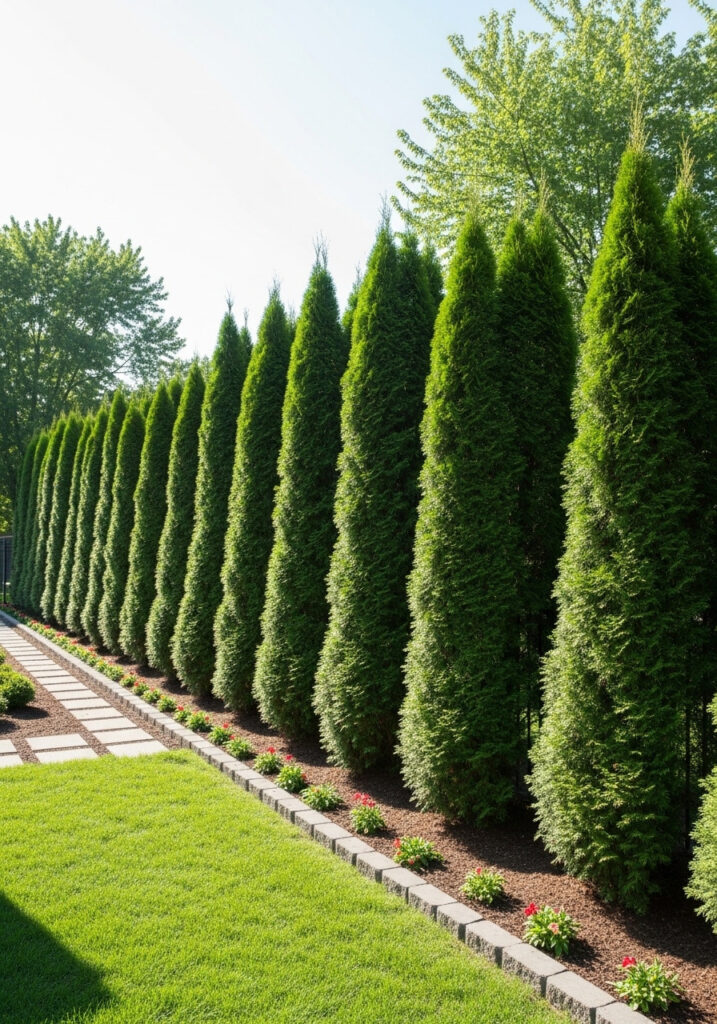
A classic row of arborvitae along the property line is still one of the most effective ways to block views. Space plants according to the mature width of the cultivar (tight spacing looks full sooner but can trap moisture), mulch to conserve soil moisture, and water deeply until established. Choose fast growers like ‘Green Giant’ for tall coverage, or narrower types like ‘Emerald Green’ where space is tight.
Build a Layered Property-Line Hedge
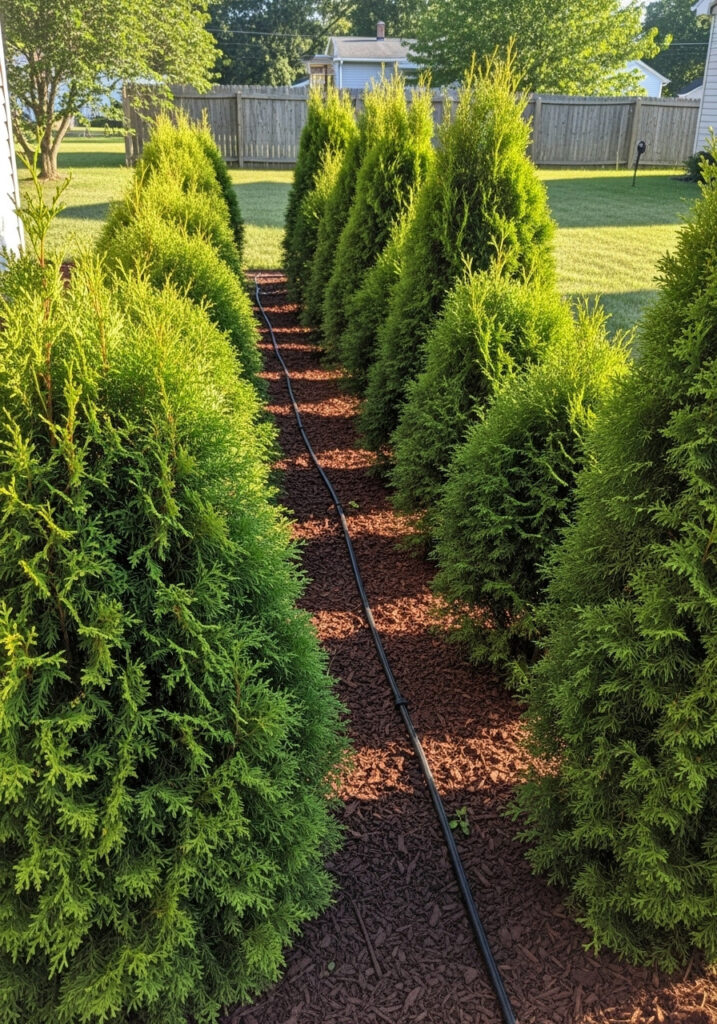
For even better sound absorption and winter protection, layer a second, offset row a few feet in front of the main hedge. The staggered layout creates depth and closes small gaps that often appear in single rows. Use the same cultivar for a uniform look or alternate two similar varieties to reduce disease vulnerability and add subtle texture.
Line a Driveway
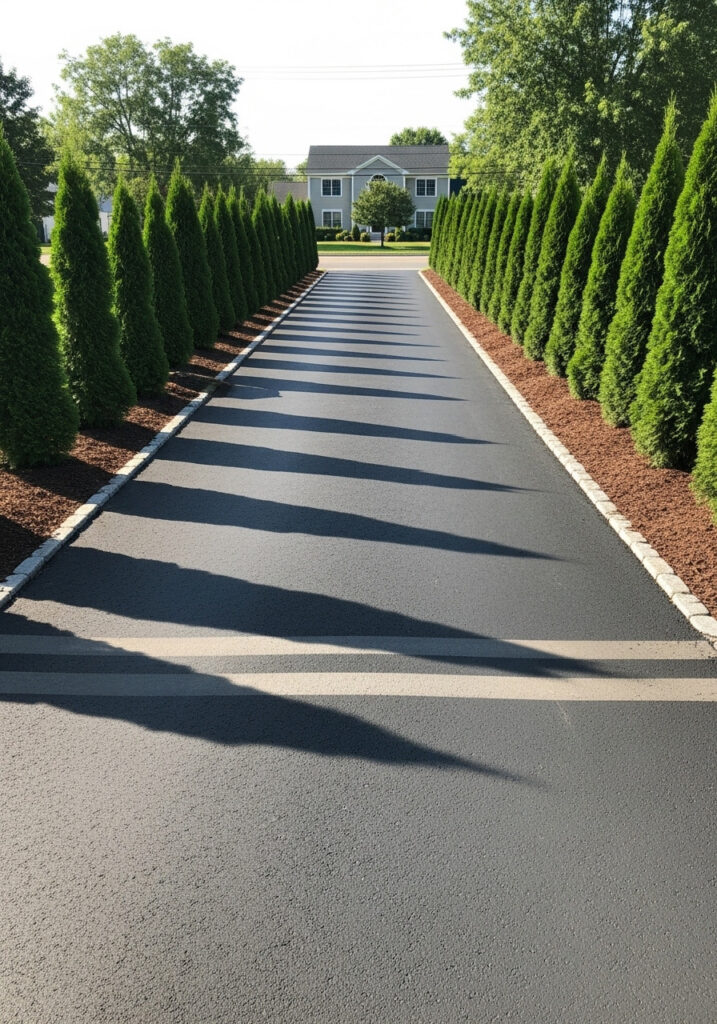
Arborvitae flanking a driveway makes a strong, orderly approach without feeling fortress-like. Keep plants out of the snow-plow zone and away from vehicle doors by allowing set-back space. A gentle taper in spacing near the street helps visibility when entering and exiting. Underplant with tough, low growers to keep the base tidy.
Frame a Front Walk
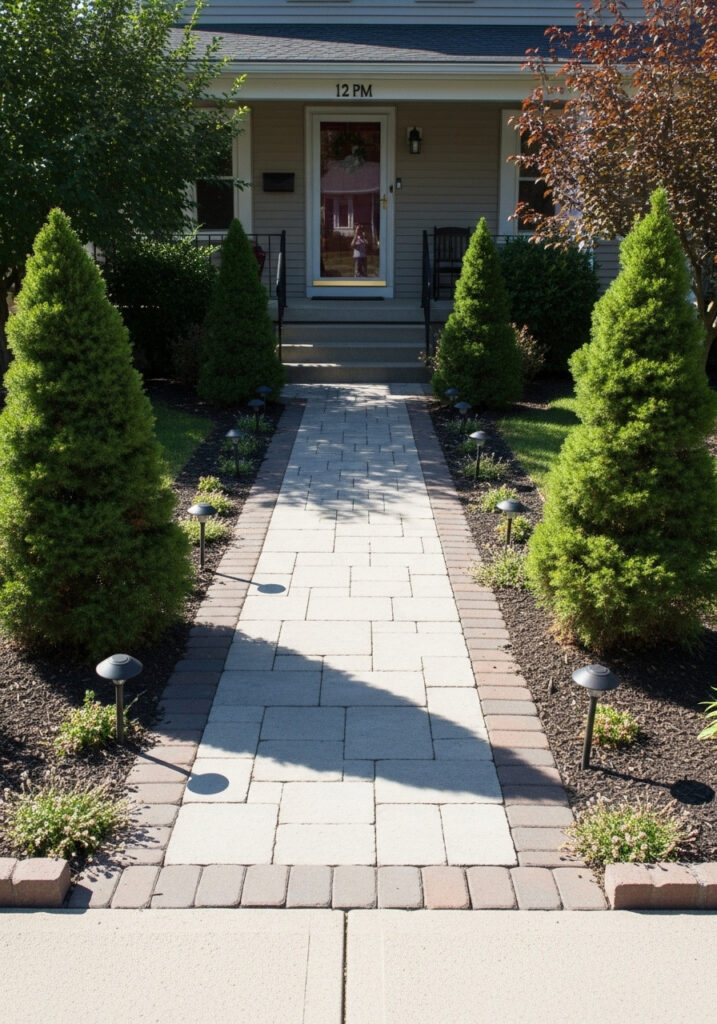
Use pairs or short runs of arborvitae to mark the beginning, midpoint, and end of a front path. The vertical forms act like architectural columns, gently guiding guests toward the door. Keep heights scaled to the house; short varieties near stoops ensure entries stay bright and welcoming.
Accent Home Corners
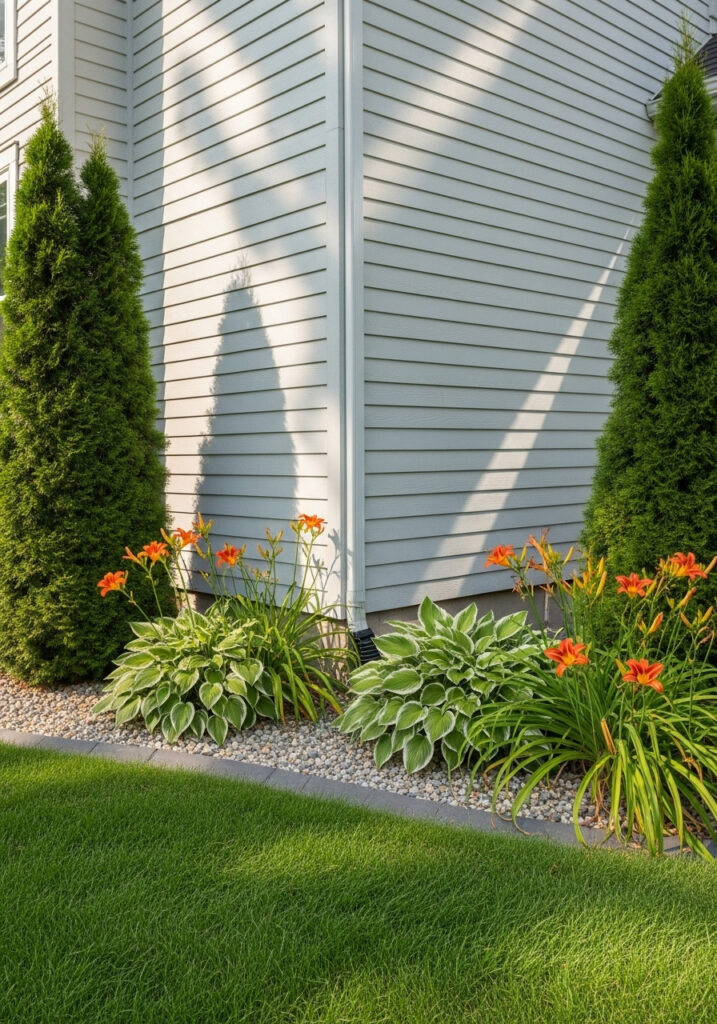
Corners can look stark, especially on tall façades. Position arborvitae at each corner to soften the vertical edges and visually “lift” the house. If windows sit low, choose slimmer cultivars so light isn’t blocked. A light pruning in late spring keeps forms clean without constant maintenance.
Enclose a Patio or Deck
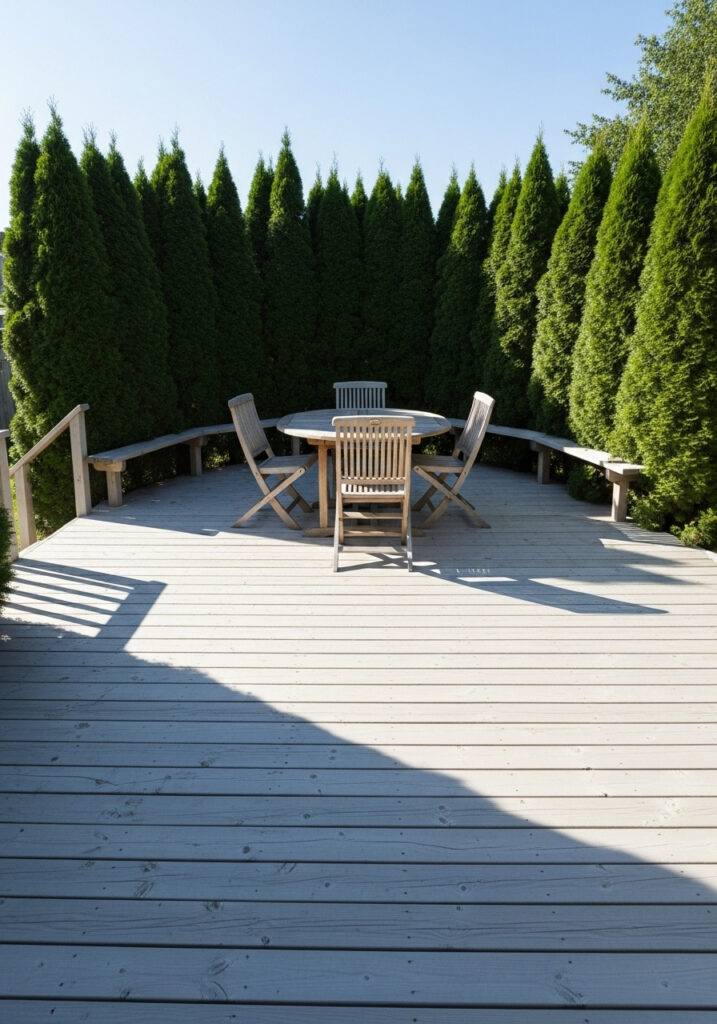
Create a green “room” by planting a half-circle of arborvitae around a patio or deck. The living enclosure dampens neighborhood noise and wind while keeping the space bright. Leave intentional openings for air movement and traffic, and keep foliage pruned away from railings to avoid mildew.
Use as a Garden Backdrop
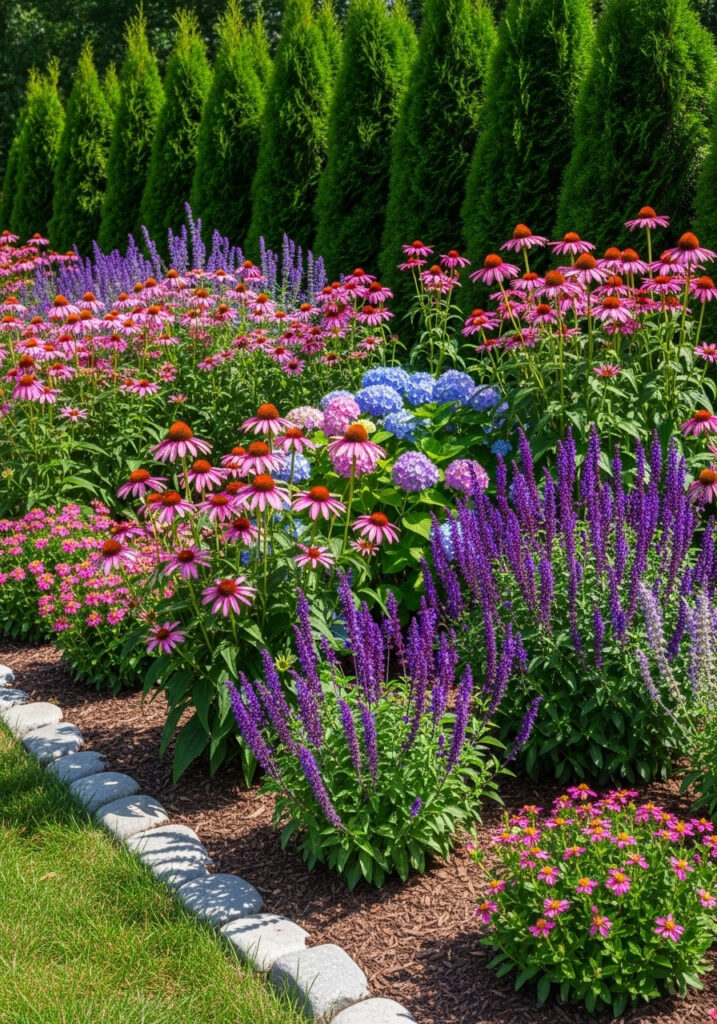
A uniform green backdrop lets seasonal flowers and foliage shine. Place a straight row behind mixed borders, then stagger perennials and shrubs in front for depth. In small yards, even three to five arborvitae can frame a color bed and make compositions feel intentional.
Plant in Large Containers
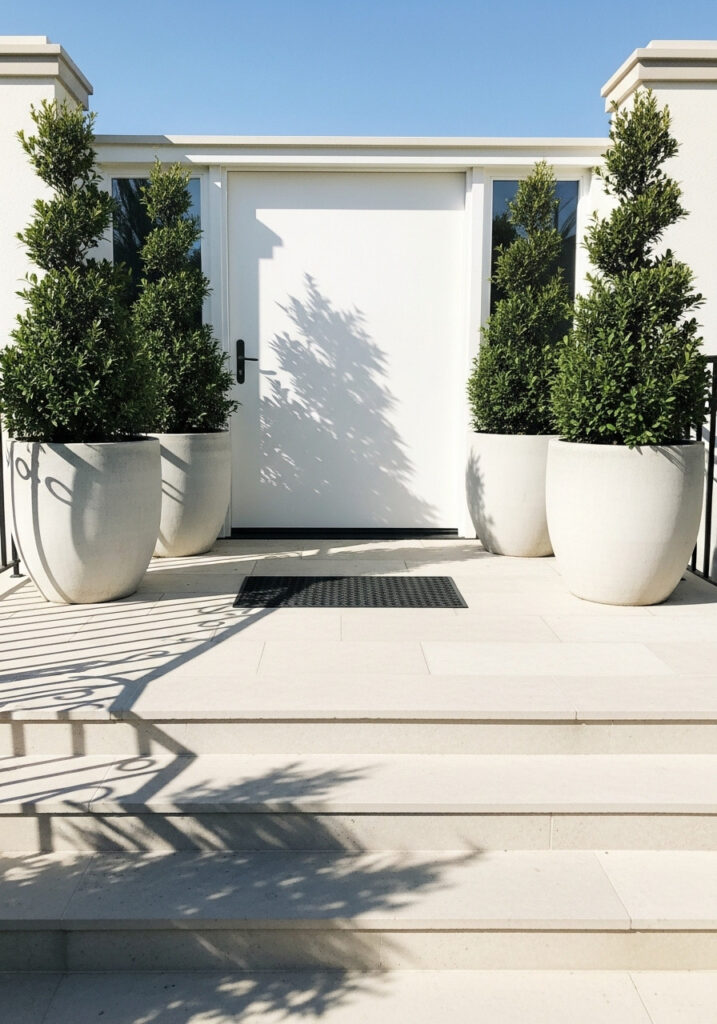
Dwarf arborvitae varieties thrive in planters, providing year-round structure where in-ground space is limited. Use frost-proof containers with ample drainage and a high-quality potting mix. Rotate the pot a few times a season for even growth and water consistently, especially on windy sites.
Pair with Ornamental Grasses
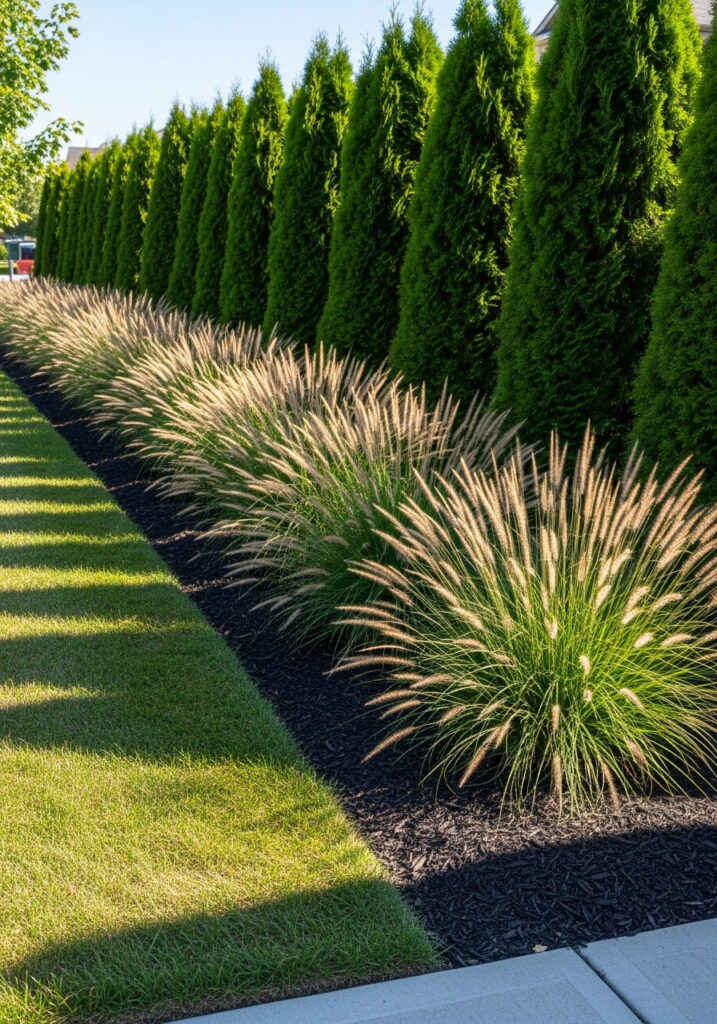
Contrast is everything: the rigid verticals of arborvitae look richer against the movement of fountain grass, miscanthus, or feather reed grass. Space grasses a foot or two forward so the plumes arch without rubbing the evergreens. This pairing reads high-end with very little upkeep.
Screen a Pool Area
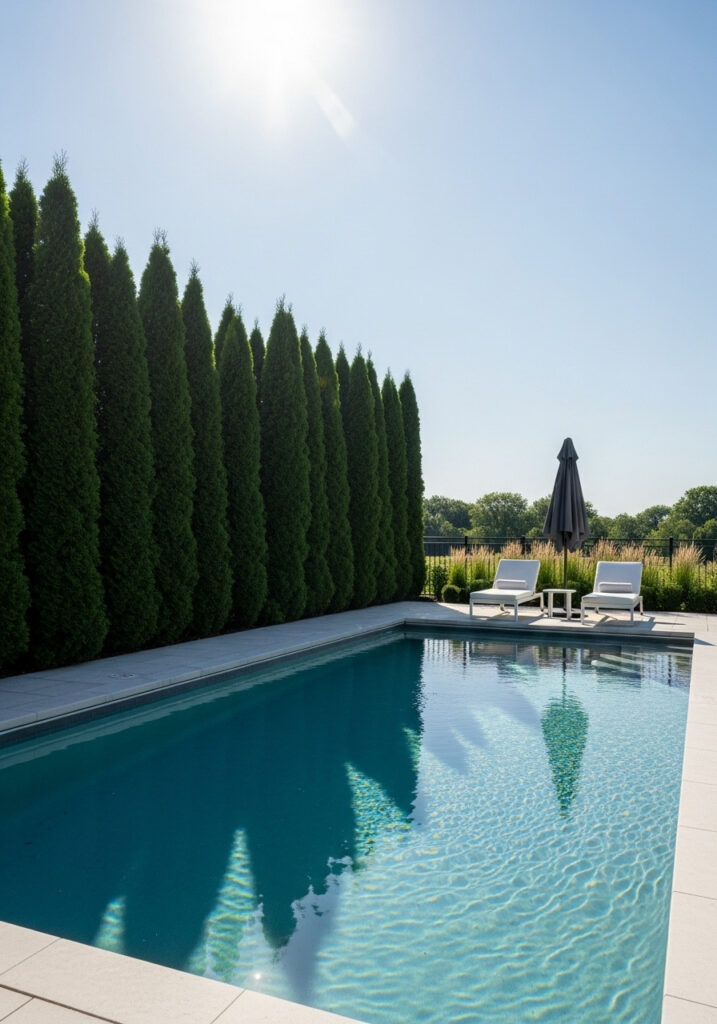
Arborvitae handle splash and humidity well, and their dense habit keeps pool zones private without harsh walls. Maintain a service corridor behind the hedge for trimming and equipment access. Avoid messy seeders nearby; choose clean cultivars and use landscape fabric under gravel to simplify maintenance.
Block Wind and Snow
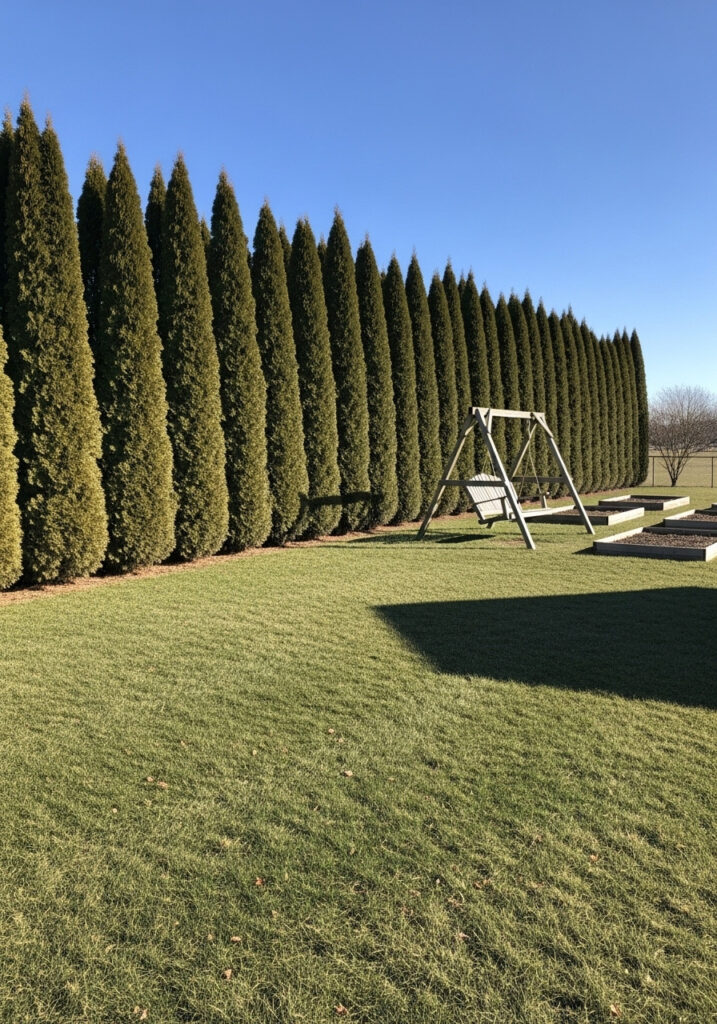
In colder regions, a windbreak of arborvitae can keep patios, vegetable beds, and play areas usable longer. Plant the hedge perpendicular to prevailing winds and leave enough space for snow load. In very windy sites, a double row improves performance without creating turbulence.
Divide Large Yards into Garden Rooms
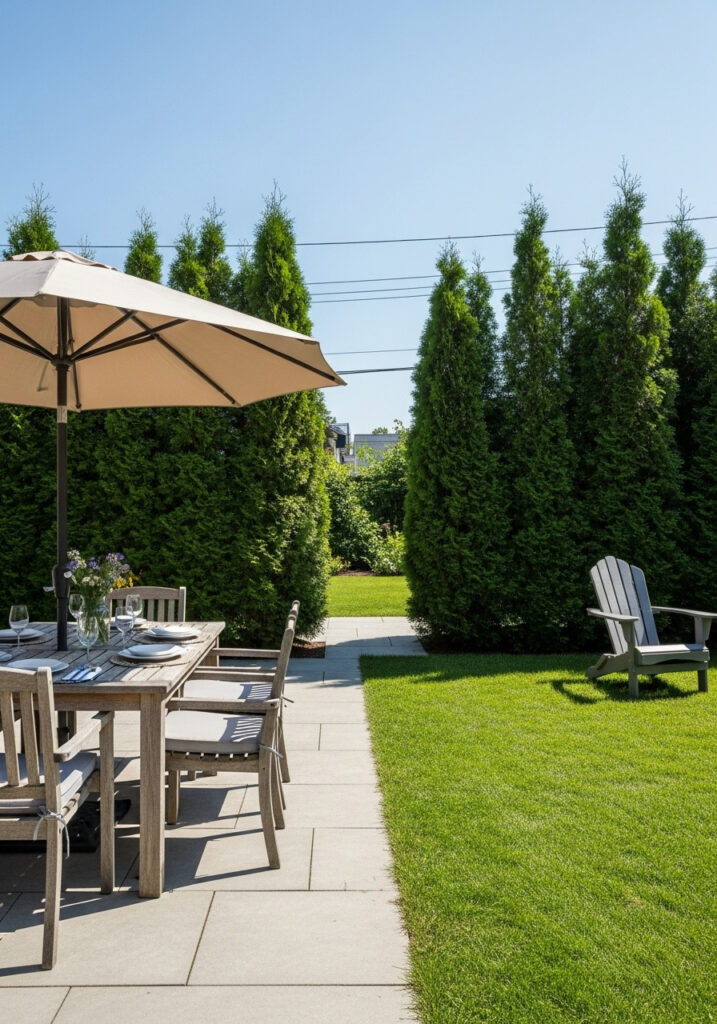
Big yards feel more intimate when you partition space with green walls. Use short runs of arborvitae to separate a dining patio from a play lawn or to hide a utility shed. Keep pathways wide for mowers and wheelbarrows, and add a simple stepping-stone threshold to invite exploration.
Anchor Mixed Borders Year-Round
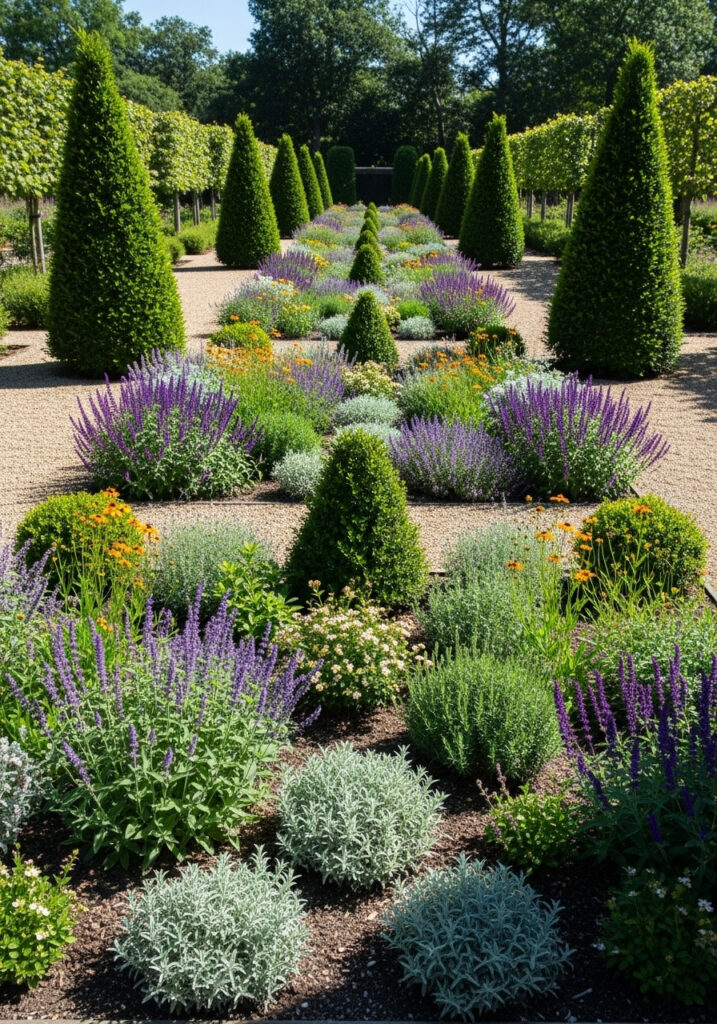
Because arborvitae keep their color, they’re ideal “anchors” at the ends of mixed beds. Place one at each terminus or every 12–16 feet along a long border to visually stitch seasons together. When perennials go dormant, the evergreen framework prevents the garden from looking empty.
Shape for Formal Symmetry
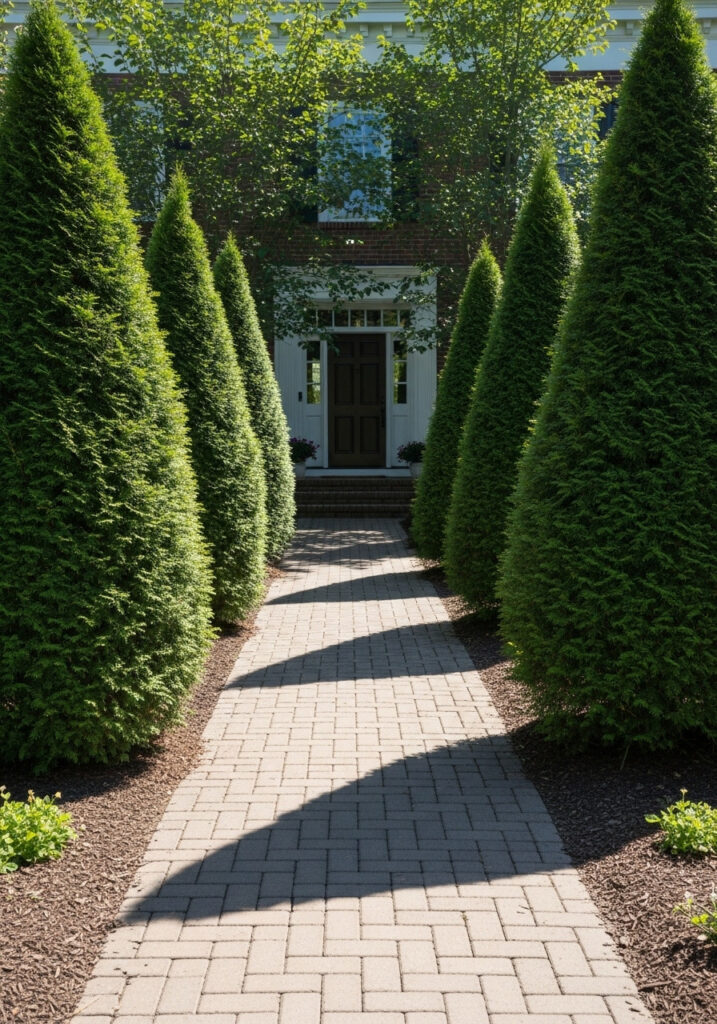
Arborvitae tolerate shearing, so you can create cones, columns, or gentle spirals to flank gates, drives, or walks. Prune lightly once or twice a year, taking small cuts to maintain a crisp silhouette. Formal symmetry near entries instantly upgrades curb appeal.
Hide Utilities and Eyesores
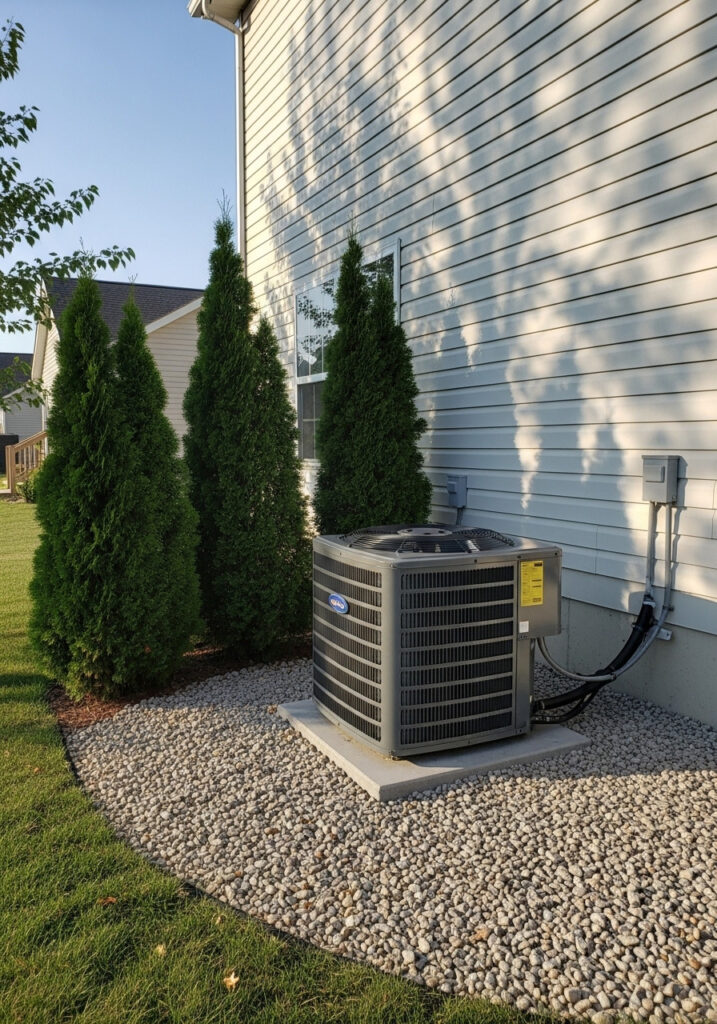
Use clusters of arborvitae to screen AC units, pool equipment, or trash enclosures. Leave ventilation space around mechanicals, and position plants so maintenance panels remain accessible. A shallow mulch bed keeps mowing equipment from scalping the base foliage.
Create Seasonal Displays in Front
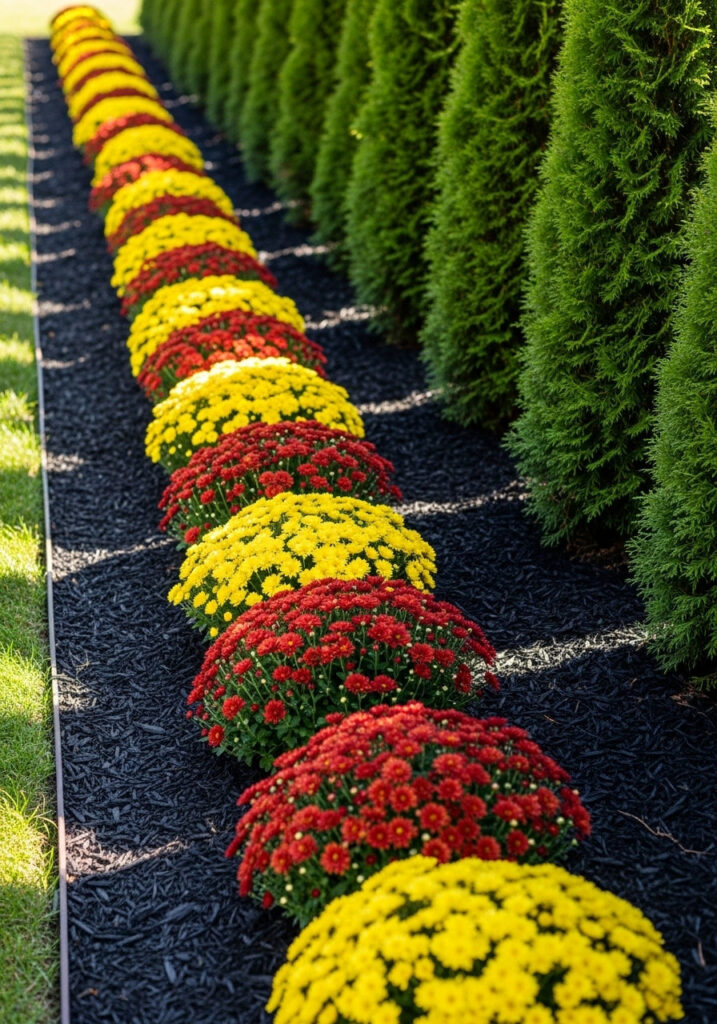
Arborvitae’s deep green backdrop makes seasonal color pop. In spring, thread in tulips and daffodils; in summer, zinnias and salvia; in fall, mums and asters. Keep plantings shallow so you don’t crowd the evergreen roots, and refresh mulch annually to maintain a clean line.
Meet Tomas Clayton, a seasoned plant gardener who has been passionate about horticulture since he was a child. Tomas John developed a love for the natural world and a strong appreciation for the beauty of plants while growing up on a farm.

